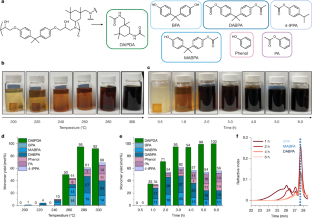2025-06-24 パシフィック・ノースウェスト国立研究所(PNNL)

The U.S. electric grid is entering a new era marked by rising demand, greater complexity, and the integration of inverter-connected resources lacking traditional inertia. To support this transition, PNNL launched the E-COMP initiative, which combines expertise in power systems, control theory, and optimization. (Illustration by Cortland Johnson | Pacific Northwest National Laborato)
<関連情報>
- https://www.pnnl.gov/publications/addressing-grid-vulnerabilities-e-comp
- https://ieeexplore.ieee.org/document/10531678
- https://ieeexplore.ieee.org/document/10556716/
- https://ieeexplore.ieee.org/document/9185060
電流制限モードと通常運転の間を移行する系統形成インバータの基準 Criteria for Grid-Forming Inverters Transitioning Between Current Limiting Mode and Normal Operation
Xue Lyu; Wei Du; Sheik Mohammad Mohiuddin; Sai Pushpak Nandanoori; Marcelo Elizondo
IEEE Transactions on Power Systems Published:16 May 2024
DOI:https://doi.org/10.1109/TPWRS.2024.3402012
Abstract:
This letter focuses on the fault recovery analysis of inverters using multi-loop droop based grid-forming control, taking into account different current limiting strategies. A criterion is proposed to determine when the inverter can exit the current limiting mode after fault clearance. The theoretical findings are verified through electromagnetic transient simulations using the direct (d)-axis priority-based current limiting method, circular current limiting method, and virtual impedance method.
インバータが支配する送電網のコヒーレンシーを考慮した学習制御: 分散型リスク制約アプローチ Coherency-Aware Learning Control of Inverter-Dominated Grids: A Distributed Risk-Constrained Approach
Kyung-Bin Kwon; Ramij Raja Hossain; Sayak Mukherjee; Kaustav Chatterjee; Soumya Kundu; Sameer Nekkalapu,…
IEEE Control Systems Letters Published:13 June 2024
DOI:https://doi.org/10.1109/LCSYS.2024.3413868
Abstract:
This letter investigates the importance of integrating the coherency knowledge for designing controllers to dampen sustained oscillations in wide-area power networks with significant penetration of inverter-interfaced resources. Coherency is a fundamental property of power systems, where time-scale separation in frequency dynamics leads to clustered behavior among generators of different groups. Large-scale penetration of inverter-driven low inertia resources replacing conventional synchronous generators (SGs) can lead to perturbation in the coherent partitioning; hence, integrating such information is of utmost importance for oscillation control designs. We present the coherency-aware design of a distributed output feedback-based reinforcement learning method that additionally incorporates risk constraints to capture the uncertainties related to net-load fluctuations. The use of domain-aware coherency information has produced improved training and oscillation performance than the coherency-agnostic control design, hence proving to be effective in controller design. Finally, we validated the proposed method with numerical experiments on the benchmark IEEE 68-bus test system.
将来の電力システムにおけるユビキタスパワーエレクトロニクス: 高速制御能力をフルに活用するための提言 Ubiquitous Power Electronics in Future Power Systems: Recommendations to Fully Utilize Fast Control Capabilities
Zhenyu Huang; Hariharan Krishnaswami; Guohui Yuan; Renke Huang
IEEE Electrification Magazine Published:02 September 2020
DOI:https://doi.org/10.1109/MELE.2020.3005696
Abstract:
Power systems worldwide are evolving toward a new mix of generating resources, transmission networks, and consumption devices, driven by economic development, environmental sustainability, and deep electrification. The resource mix has been changing in recent years with rapidly growing inverter-based resources such as wind, solar generation, and battery storage. The electricity infrastructure is also evolving, being augmented with dc power lines, flexible alternating current transmission systems (FACTS), and solid-state transformers. Electric loads are being transformed by the electrification of end uses such as electric vehicles (EVs) as well as the adoption of new grid interfaces such as variable frequency drives and digital power supplies. All these evolutions have one thing in common-power electronics. They all need power electronics to connect to the rest of the power system (Figure 1). As a result, a high percentage of electricity will be generated, transmitted, and consumed by power electronics in the future power system.



